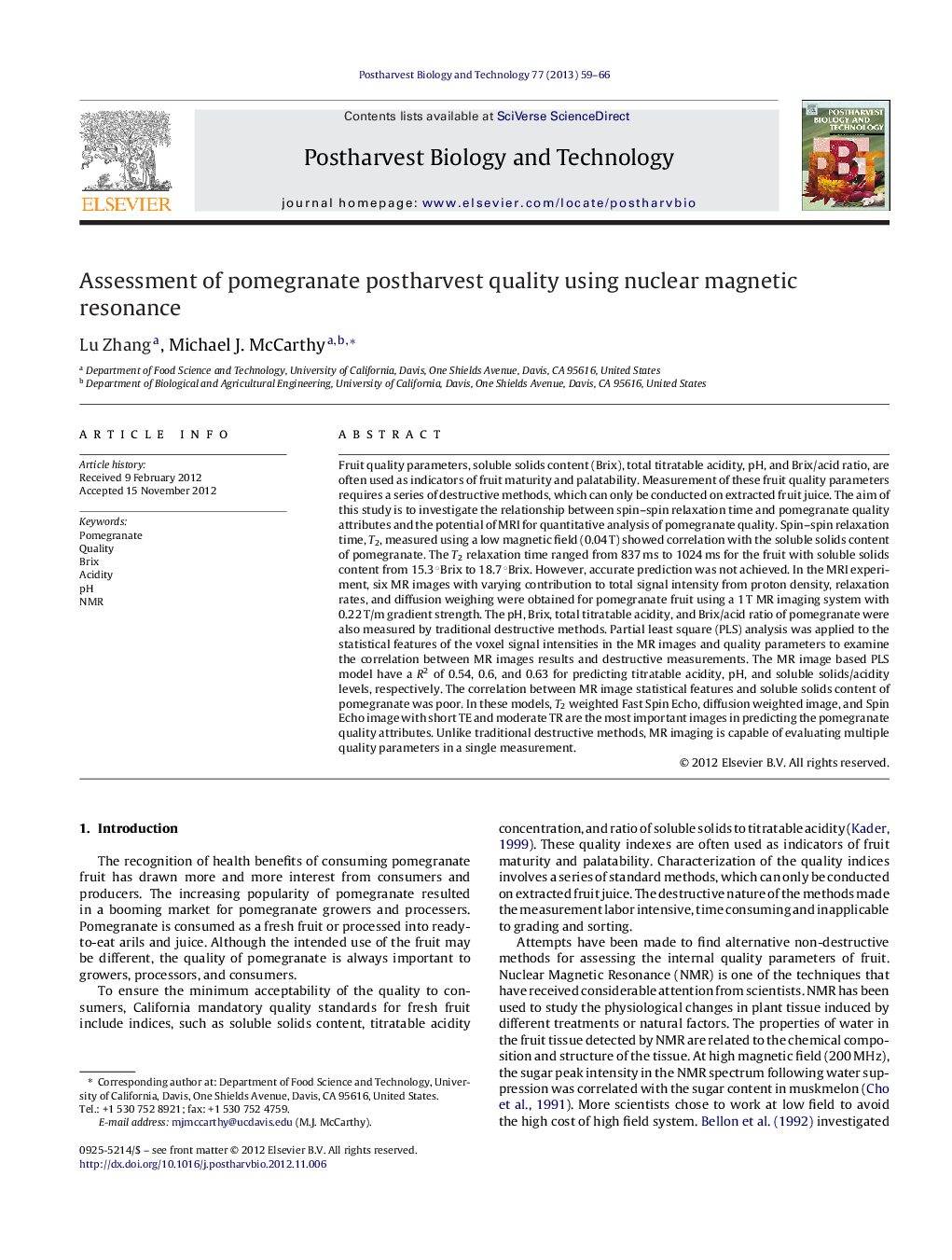| کد مقاله | کد نشریه | سال انتشار | مقاله انگلیسی | نسخه تمام متن |
|---|---|---|---|---|
| 4518506 | 1625017 | 2013 | 8 صفحه PDF | دانلود رایگان |

Fruit quality parameters, soluble solids content (Brix), total titratable acidity, pH, and Brix/acid ratio, are often used as indicators of fruit maturity and palatability. Measurement of these fruit quality parameters requires a series of destructive methods, which can only be conducted on extracted fruit juice. The aim of this study is to investigate the relationship between spin–spin relaxation time and pomegranate quality attributes and the potential of MRI for quantitative analysis of pomegranate quality. Spin–spin relaxation time, T2, measured using a low magnetic field (0.04 T) showed correlation with the soluble solids content of pomegranate. The T2 relaxation time ranged from 837 ms to 1024 ms for the fruit with soluble solids content from 15.3 °Brix to 18.7 °Brix. However, accurate prediction was not achieved. In the MRI experiment, six MR images with varying contribution to total signal intensity from proton density, relaxation rates, and diffusion weighing were obtained for pomegranate fruit using a 1 T MR imaging system with 0.22 T/m gradient strength. The pH, Brix, total titratable acidity, and Brix/acid ratio of pomegranate were also measured by traditional destructive methods. Partial least square (PLS) analysis was applied to the statistical features of the voxel signal intensities in the MR images and quality parameters to examine the correlation between MR images results and destructive measurements. The MR image based PLS model have a R2 of 0.54, 0.6, and 0.63 for predicting titratable acidity, pH, and soluble solids/acidity levels, respectively. The correlation between MR image statistical features and soluble solids content of pomegranate was poor. In these models, T2 weighted Fast Spin Echo, diffusion weighted image, and Spin Echo image with short TE and moderate TR are the most important images in predicting the pomegranate quality attributes. Unlike traditional destructive methods, MR imaging is capable of evaluating multiple quality parameters in a single measurement.
► Significant correlation was observed between T2 relaxation time and soluble solid content of pomegranate.
► Controlled atmosphere storage affected the relationship between T2 relaxation time and pomegranate quality attributes drastically.
► PLS models based on the MR images proved to be effective for measuring pH, TA, and SSC/TA in pomegranate fruit.
Journal: Postharvest Biology and Technology - Volume 77, March 2013, Pages 59–66